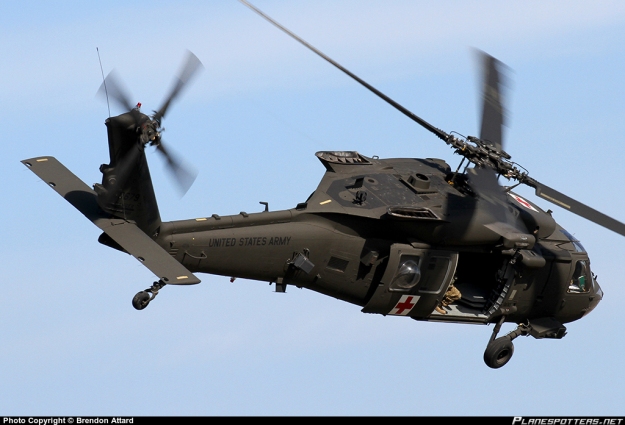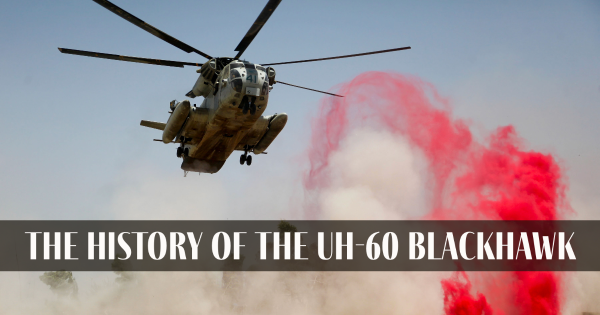Optimizing Security: Necessary Upkeep Tips for Your UH 60 Helicopter
Optimizing Security: Necessary Upkeep Tips for Your UH 60 Helicopter
Blog Article
Comprehending the Mechanics and Engineering Behind Uh 60 Helicopters
The UH-60 helicopter, frequently referred to as the Black Hawk, stands as a peak of modern-day rotorcraft innovation, symbolizing a mix of robust design and complex technicians. From its creation to its current versions, the evolution of this aircraft showcases a fusion of technology and usefulness. As we peel back the layers of the UH-60's design, a globe of detailed systems and thorough engineering comes to light. Understanding the mechanics and engineering behind this flexible airplane reveals a world where precision satisfies power, and where each element plays an important duty in attaining flight.
Background of UH-60 Helicopters
The background of UH-60 helicopters traces back to the late 1970s when the United States Military sought a innovative and flexible energy helicopter to change its aging fleet. In response to this requirement, the Sikorsky Aircraft Corporation developed the UH-60 Black Hawk helicopter. Introduced in 1979, the UH-60 promptly came to be a staple in army operations due to its impressive capabilities.
The UH-60 was made to excel in a range of goals, including troop transportation, clinical evacuation, electronic warfare, and special operations. Its capability to adapt to different roles made it an important property to the U.S. uh 60. Army and various other military pressures worldwide
Throughout the years, the UH-60 system has gone through several upgrades and variants to enhance its efficiency and keep speed with progressing objective requirements. These helicopters have seen considerable service in disputes such as the Gulf War, Afghanistan, and Iraq, showcasing their dependability and adaptability in varied functional environments. The UH-60's rich background is a testament to its long-lasting tradition as a leading energy helicopter.

Engine and Power Equipments
Using advanced propulsion modern technology, UH-60 helicopters are geared up with innovative engine and power systems to make sure ideal efficiency and reliability in a variety of functional scenarios. The UH-60, commonly called the Black Hawk, is powered by 2 General Electric T700-GE-701D engines, each with the ability of providing up to 1,940 shaft horsepower. These turboshaft engines supply the necessary thrust for the helicopter to accomplish its missions properly, including troop transport, clinical emptying, and combat support.

Rotor System and Aerodynamics
Just how do the rotor system and the rules of aerodynamics of UH-60 helicopters add to their operational efficiency and flight capabilities? The blades system of the UH-60 helicopter plays an important role in providing lift and propulsion. The UH-60 includes a four-bladed, fully articulated blades system that permits high ability to move and security during flight. This layout enables the helicopter to perform a broad variety of objectives, from transportation and clinical evacuation to deal with procedures.
The rules of aerodynamics likewise play a key function in the performance of UH-60 helicopters. The structured fuselage and blades blade layout reduce drag, allowing the helicopter to attain greater rates page and better gas performance. The wind resistant style of the UH-60 likewise adds to its ability to run in varied ecological problems, consisting of warm temperatures and high altitudes.
Avionics and Trip Control Solution

In its intricate control with the blades system and the rules of aerodynamics of UH-60 helicopters, the avionics and trip control systems create an essential network of innovations forming the aircraft's operational capabilities. Avionics incorporate the digital systems used for communication, navigating, and monitoring numerous aircraft features. In the UH-60, these systems include digital displays, interaction radios, GPS navigating, weather radar, and autopilot systems. These avionics systems provide critical details to the pilots, boosting situational awareness and making sure secure and effective procedure of the helicopter.
The linked here trip control systems of the UH-60 are responsible for equating the pilot's inputs into the ideal modifications to the rotor system, making certain stable trip and maneuverability. These systems contain hydraulic actuators, servos, and computers that work together to control the tail and primary rotors, in addition to other flight control surface areas. By specifically taking care of the helicopter's flight characteristics, these systems make it possible for pilots to do a vast array of goals, from transportation and search-and-rescue to fight operations, with accuracy and self-confidence.
Duty and Applications in Air Travel
The role and applications of avionics and flight control systems in aviation are important to making certain the reliable and safe procedure of airplane, consisting of UH-60 helicopters. Avionics systems in UH-60 helicopters encompass an array of digital systems that aid in navigation, communication, surveillance, and managing different airplane features. These systems include electronic displays, auto-pilot systems, communication radios, GPS navigating devices, and weather condition radar. Flight control systems play an essential role in navigating the helicopter airborne, preserving stability, and guaranteeing exact activities. The fly-by-wire technology used in modern UH-60 helicopters converts pilot inputs right into electronic signals, which are after that translated by the flight control computers to change the airplane's control surfaces. Furthermore, these systems include security attributes such as auto-pilot settings, surface understanding alerting systems, and stability augmentation systems to improve the overall safety and security and operational capabilities of the UH-60 helicopters in numerous goals, consisting of troop transportation, medical evacuation, search and rescue, and airborne firefighting.
Conclusion
In verdict, the UH-60 helicopter is a functional airplane with a rich background and progressed uh 60 design. Its engine and power systems, blades system, the rules of aerodynamics, avionics, and flight control systems all work with each other to make it a reliable and reliable equipment.
In its intricate sychronisation with the blades system and aerodynamics of UH-60 helicopters, the avionics and flight control systems develop a critical network of innovations forming the airplane's operational capacities.The trip control systems of the UH-60 are accountable for converting the pilot's inputs into the suitable adjustments to the rotor system, making certain stable flight and maneuverability. Avionics systems in UH-60 helicopters include an array of digital systems that aid in navigating, interaction, tracking, and controlling different aircraft features. Furthermore, these systems include safety functions such as autopilot settings, surface understanding cautioning systems, and stability augmentation systems to boost the general safety and operational capacities of the UH-60 helicopters in different objectives, including troop transport, medical emptying, search and rescue, and aerial firefighting.
Its engine and power systems, rotor system, aerodynamics, avionics, and trip control systems all work with each other to make it a efficient and reputable equipment.
Report this page